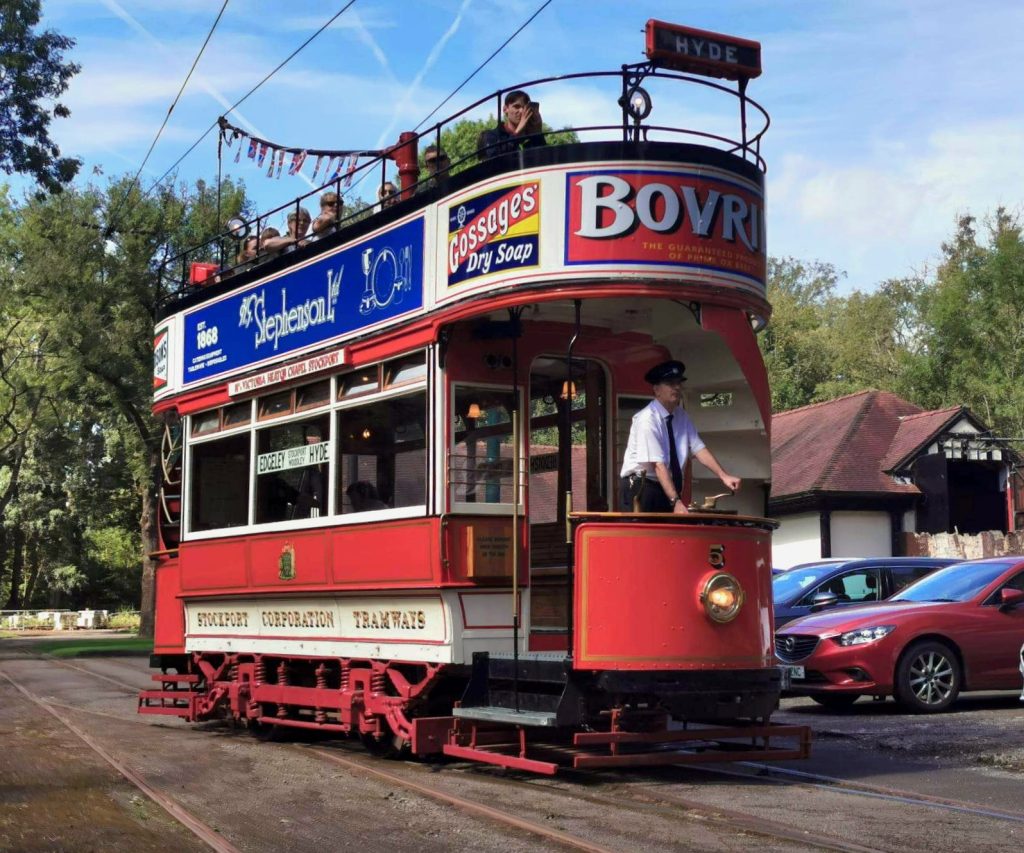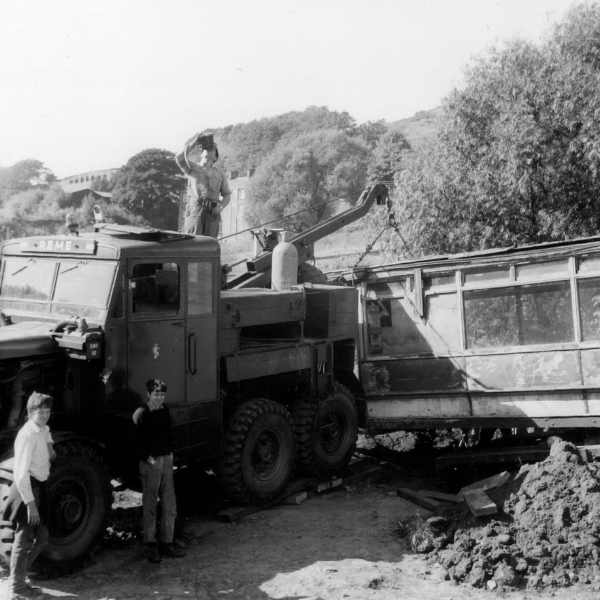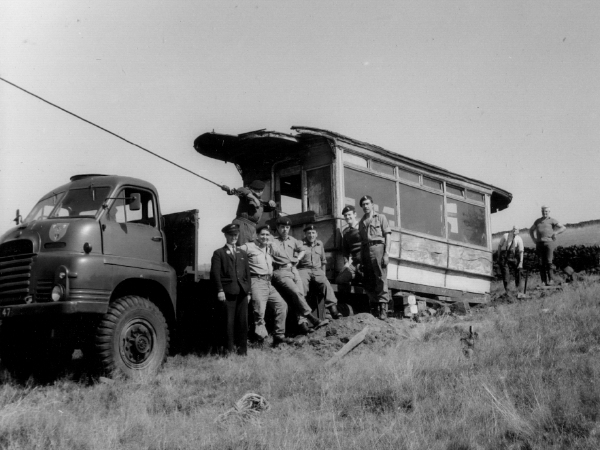
Stockport 5 was originally built as a 4-wheel open-top tram in 1901, along with nine other trams of the same kind. It was later given a top cover. After being retired in 1948, Stockport 5 was not scrapped, but instead repurposed as a shed, like many other trams across the country. Fortunately, the lower saloon of Stockport 5 was rediscovered and acquired for preservation.
In order to complete the restoration, a 4-wheel coal-carrying tram was purchased from Oporto. Although the bodywork was scrapped, the 4-wheel truck was used for Stockport 5. After many years of hard work, Stockport 5 was fully restored in 1996 and relocated to Blackpool. However, it saw limited use before being transferred to Doncaster in 2002, where it was put on display to celebrate the town's 100 years of public transport before returning to Blackpool shortly after.
Stockport 5 was occasionally used over the following years before being moved to Heaton Park in 2011, where it operated regularly until the end of 2013 when, following the discovery of rotten floorboards on the top deck, it was withdrawn for overhaul. After spending seven years in the workshops, Stockport 5 was launched back into service in December 2020, operating for the Lightopia event in the park over winter. We are grateful to Ian Currier for providing us with an account and photographs of Stockport 5 being loaded up on its way to preservation, which we are pleased to display here.


“The job was done by half a dozen craftsmen and me of 236 Squadron RCT Workshop REME TA in 1971. At the time I was the OC of the unit which was based on Chorlton Road. The remains of the tram body were found on the moors of the saddle between Hayfield and Glossop. It had been used latterly as a hen house and the woodwork was somewhat rickerty but in quite good shape considering. We decided that the woodwork would not stand a lift as it was likely to come apart. We created a dock at one end of the tram and using slings around the chassis and 5 ton jib, dragged the body onto the flatbed of the Bedford 4 ton RL truck, which it fitted nicely. There was no track as such on which to move the vehicle and load but the combination of the 6×6 Scammel recovery vehicle and 4×4 Bedford enabled us to get the load onto a nearby stone track. Being a high and fragile load, it was a bit tricky.”



